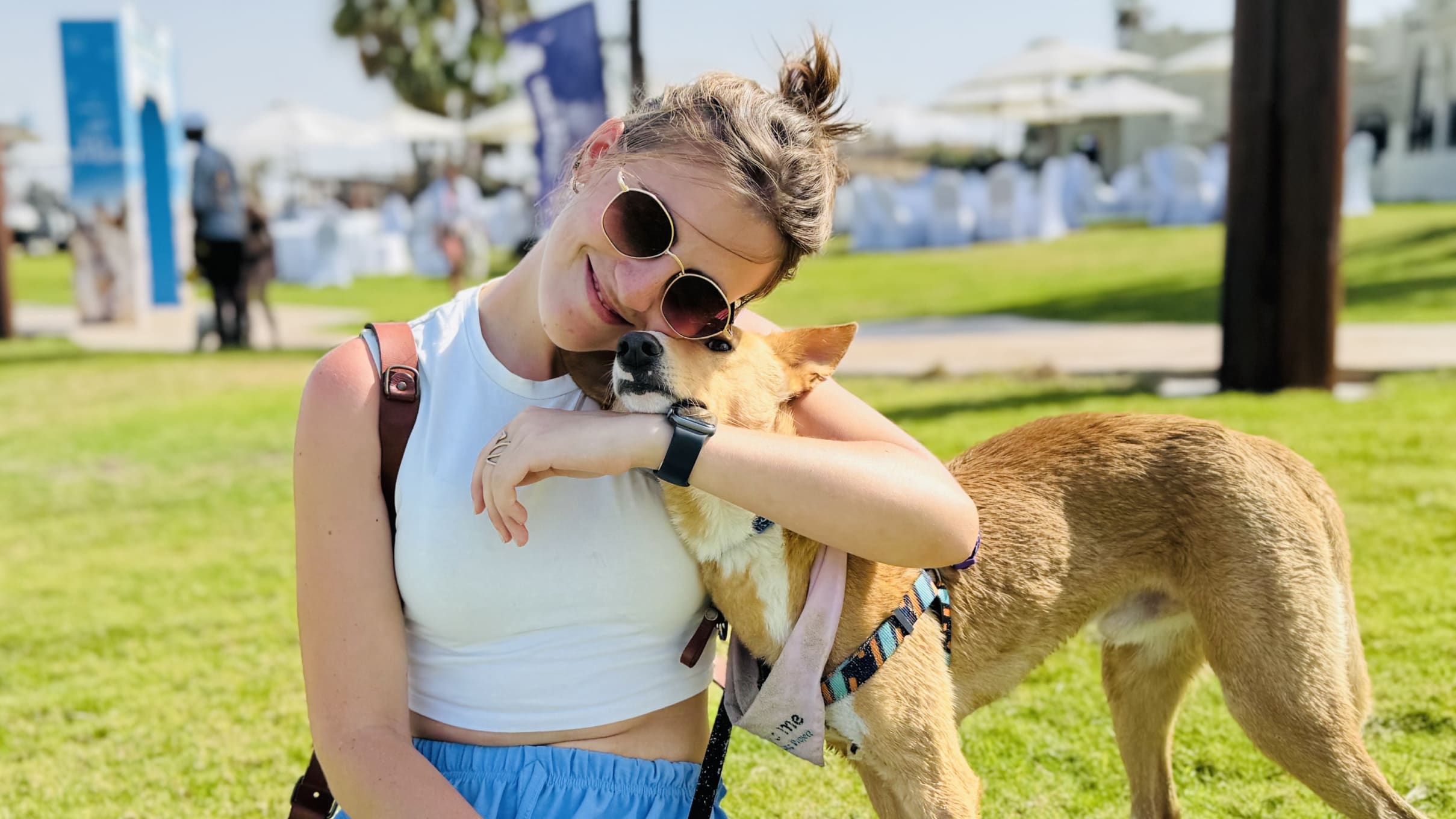Mastering Leash Control - Is Your Dog Walking You?

As a dog owner, few experiences are as rewarding as taking your furry companion for a stroll in the great outdoors.
However, for many pet parents, what should be a pleasant and harmonious activity often turns into a tug-of-war, with the dog taking the lead and the human struggling to keep up.
You're not alone if you find yourself being pulled, dragged, or contorted into awkward positions during walks.
Mastering leash control is an essential skill for any dog owner, allowing you and your four-legged friend to enjoy enjoyable and safe walks.
Understanding the Dynamic
Before delving into the techniques for mastering leash control, it's crucial to understand the underlying dynamic between you and your dog during walks.
Dogs are naturally curious and energetic animals, prone to distractions from scents, sights, and sounds in their environment.
As a result, they may pull on the leash to investigate these stimuli, inadvertently leading you along for the ride.
While it's understandable that dogs want to explore, it's equally important for them to recognize you as the leader and the one in control.
A harmonious walk should involve clear communication and mutual respect.
With that in mind, let's explore some effective strategies to regain control of the leash and ensure you're the one leading the way.
The Power of Proper Training
One of the foundational pillars of mastering leash control is proper dog leash training.
Training your dog to walk calmly on a leash takes time, consistency, and patience.
Begin by teaching your furry friend basic commands like "heel" and "walk," reinforcing the idea that they should stay close to your side and walk at a steady pace.
Positive reinforcement, such as treats or praise, can work wonders in encouraging desired behavior.
Start training in a quiet, distraction-free environment before gradually introducing more stimulating surroundings.
Teaching your dog to focus on you, even in the presence of enticing distractions, is a key step toward mastering leash control.
Remember, it's not about suppressing your dog's natural curiosity but redirecting and managing it effectively.
Choosing the Right Equipment
Selecting the appropriate equipment plays a significant role in mastering dog leash training and control.
While an array of options are available, a well-fitting harness is generally recommended over a traditional collar.
A harness distributes pressure more evenly across your dog's body, reducing the risk of injury and discomfort.
A front-clip harness or head collar can also provide more control by discouraging pulling.
Using a retractable dog leash may seem convenient, but it can hinder your efforts to establish leash control.
These leashes allow dogs more freedom to pull and wander, making maintaining a consistent walking pace challenging.
Opt for a standard, non-retractable leash of an appropriate length for better control and communication.
Consistency and Communication
Consistency is key when it comes to mastering leash control.
Dogs thrive on routine and clear expectations.
Set guidelines for your walks and stick to them.
For example, decide whether you want your dog to walk on your left or right side and maintain that position consistently.
Avoid sudden changes in direction or pace, as these can confuse your dog and lead to erratic behavior.
Effective communication is another crucial aspect.
Use a firm yet gentle tone of voice to issue commands, and be attentive to your dog's body language.
When your dog pulls on the leash, stop walking and wait for them to ease the tension.
Once the dog leash is loose, resume walking.
This teaches your dog that pulling leads to a halt in progress, while walking without tension is rewarded with movement.
Engaging Exercises
Engaging your dog's mind and body through exercises can significantly contribute to mastering leash control.
Mental stimulation can tire out your dog and reduce their inclination to pull.
Incorporate training sessions during your walks, where you ask your dog to perform commands like sit, stay, or heel at intervals.
These breaks reinforce training and encourage your dog to pay attention to you.
Furthermore, consider incorporating interactive toys or games during your walks.
Bringing along a favorite squeaky toy or engaging in a short game of fetch can help redirect your dog's energy and attention.
Remember, a tired dog is more likely to walk calmly by your side.

Signs Your Dog Is Happy and Thriving
A happy dog's behavior reflects a zest for life—energetic, curious, and eager to explore their surroundings.
Ultimately, a wagging tail, bright eyes, and a heart full of exuberance reveal the unmistakable happiness of a beloved canine companion.
Here are some signs that your dog is happy and comfortable:
- Tail wagging with enthusiasm
- Bright and sparkling eyes
- Relaxed and comfortable body posture
- Playful bounces and joyful movements
- Active engagement in various activities
- Healthy and hearty appetite
- Seeking companionship and staying close to you
- Leaning into your touch as a sign of trust
- Energetic and curious behavior
- Eagerness to explore their surroundings
- Wagging tail, bright eyes, and an overall exuberant demeanor
Wrapping Up
Mastering leash control is a journey that requires dedication, patience, and a genuine bond with your canine companion.
By understanding the dynamics of leash pulling, investing in proper training, selecting appropriate equipment, maintaining consistency, and engaging your dog's mind, you can transform your walks into enjoyable and enriching experiences for both of you.
Remember, the goal is not to suppress your dog's enthusiasm but to channel it to foster a harmonious walking partnership.
With time and effort, you'll find that the days of being pulled along by your pup are replaced with leisurely strolls where you and your dog walk together, side by side.
So, take the leash in hand, embrace the journey, and let the adventure of mastering leash control begin!


Schedule your appointment today
Book My Appointment








